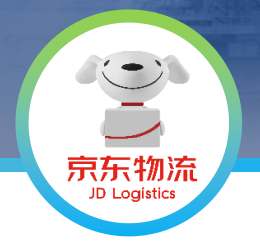- Keamanan berkorelasi untuk pengguna, jaringan dan tingkat transmisi
- Filter web berbasis AI dan kontrol akses menjaga pengguna tetap terlindungi dari web phishing, malware, virus, dan ransomware.
- Stateful firewall level 4 dan fungsi anti-DOS untuk melindungi keamanan jaringan.
- Teknologi enkripsi berkekuatan tinggi AES-256 dan otentikasi serial perangkat keras untuk melindungi keamanan transmisi data
Contoh Penggunaan
Fitur & Kemampuan
Keamanan
Penyederhanaan
- SIER menyederhanakan penerapan dan operasi dengan mengurangi 80% sumber daya IT.
- Menerapkan perangkat cabang dalam hitungan menit dengan Sangfor zero-touch provisioning melalui pengaturan dan konfigurasi yang mudah oleh anggota staf dengan tingkat pengetahuan IT apa pun.
- Semua konfigurasi dapat dikelola secara terpusat, memberikan visualisasi penuh jaringan kepada manajer IT.
Intelegensi
- Secara signifikan meningkatkan ketersediaan bisnis.
- Mendukung lalu lintas aplikasi penting dengan metode imperceptible fail-over.
- Secara otomatis memilih tautan berkualitas terbaik untuk aplikasi kritis berdasarkan QoE (latency, packet loss, jitter).
- Mengikat beberapa tautan WAN untuk core business.
Optimasi
- Mesin optimasimembantu meningkatkan efisiensi kerja hingga 3-10 kali.
- Mesin JET: Teknologi FEC otomatis canggih memungkinkan konferensi video yang mulus. Peningkatan kecepatan dijamin sebanyak 3-10 kali dalam jaringan packet loss
Keamanan
- Keamanan berkorelasi untuk pengguna, jaringan dan tingkat transmisi
- Filter web berbasis AI dan kontrol akses menjaga pengguna tetap terlindungi dari web phishing, malware, virus, dan ransomware.
- Stateful firewall level 4 dan fungsi anti-DOS untuk melindungi keamanan jaringan.
- Teknologi enkripsi berkekuatan tinggi AES-256 dan otentikasi serial perangkat keras untuk melindungi keamanan transmisi data
Penyederhanaan
- SIER menyederhanakan penerapan dan operasi dengan mengurangi 80% sumber daya IT.
- Menerapkan perangkat cabang dalam hitungan menit dengan Sangfor zero-touch provisioning melalui pengaturan dan konfigurasi yang mudah oleh anggota staf dengan tingkat pengetahuan IT apa pun.
- Semua konfigurasi dapat dikelola secara terpusat, memberikan visualisasi penuh jaringan kepada manajer IT.
Intelegensi
- Secara signifikan meningkatkan ketersediaan bisnis.
- Mendukung lalu lintas aplikasi penting dengan metode imperceptible fail-over.
- Secara otomatis memilih tautan berkualitas terbaik untuk aplikasi kritis berdasarkan QoE (latency, packet loss, jitter).
- Mengikat beberapa tautan WAN untuk core business.
Optimasi
- Mesin optimasimembantu meningkatkan efisiensi kerja hingga 3-10 kali.
- Mesin JET: Teknologi FEC otomatis canggih memungkinkan konferensi video yang mulus. Peningkatan kecepatan dijamin sebanyak 3-10 kali dalam jaringan packet loss
Kisah Sukses
Di bawah ini Anda akan menemukan semua Kisah Sukses Sangfor, yang diklasifikasikan berdasarkan Industri, seperti Perusahaan, Pemerintahan, Sekolah & Universitas, dll.
Webinar Terbaru

Sangfor Spotlights AI Infrastructure at DCCI Summit 2025 Hanoi
At DCCI Summit 2025 Hanoi, Sangfor shared AI-ready infrastructure insights and cloud strategies, drawing 2,000+ industry leaders with Viettel IDC.
Unlock the Future of Virtualization: Elevate Your Strategy Beyond VMware
Join our webinar to explore Sangfor’s Full-Stack Private Cloud, navigate VMware updates, and gain insights for a secure, cost-efficient, and innovative IT future.
New Sangfor aDesk VDI 5.9.6 Preview: The Smarter Choice for Virtual App & Desktop Solutions
Sangfor aDesk VDI 5.9.6 offers a competitive alternative to Citrix and VMware with improved Virtual App solutions and seamless migration tools. Join our webinar!
Blog Terbaru

Sangfor aDesk VDI vs Citrix: Choosing the Right VDI Solution for 2025
Compare Sangfor aDesk and Citrix XenDesktop/XenApp in 2025. Explore architecture, licensing, security, and user experience to choose the right VDI solution.
Sangfor HCI vs VMware: A Full Comparison for SMB IT Infrastructure in 2025
Compare Sangfor HCI and VMware head-to-head in 2025. See which HCI platform offers better simplicity, security, and value for growing IT environments.
Mengenal Edge Computing: Pengertian, Manfaat, hingga Contohnya
Edge computing merupakan teknologi yang memproses data lebih dekat ke sumbernya. Pelajari selengkapnya pada artikel berikut ini. Baca sekarang juga!
Berita Terbaru

Sangfor Backup Platform Powered by Veeam Sets to Deliver Effortless, Enterprise-Grade Data Resilience
Empower your business with Sangfor Backup Platform powered by Veeam—offering agentless backup, 1-click recovery, and simplified data management.
Sangfor Technologies Recognized as a Representative Vendor in the 2025 Gartner® Market Guide for Full-Stack Hyperconverged Infrastructure Software
Sangfor named a Representative Vendor in Gartner’s 2025 HCI Guide, highlighting its innovation, global growth, and hybrid cloud capabilities.
Sangfor Technologies Ranked as the Top 3 Largest HCIS Vendor by Revenue in Asia-Pacific for 2024 based on Gartner® Market Share Report
Sangfor ranked as a top 3 HCIS vendor by revenue in Asia-Pacific for 2024, based on Gartner® Market Share Report. Leading in cloud and cybersecurity solutions.
Hubungi Kami
Pusat Unduhan
Frequently Asked Question
An edge router, or access router, is a specialized router designed to sit at the edge or boundary of a network. Edge routers allow the internal network to communicate with external and remote networks. In contrast, core routers are located in the middle of the network and provide internal communication.


